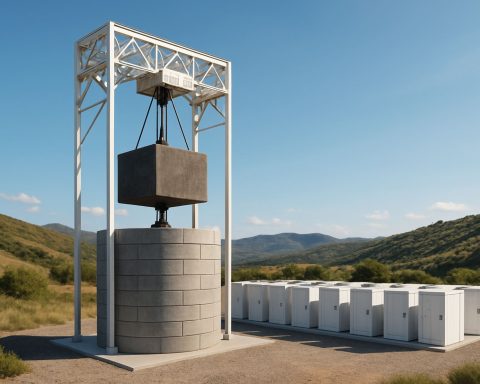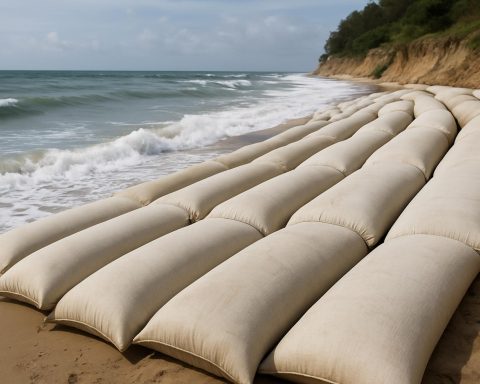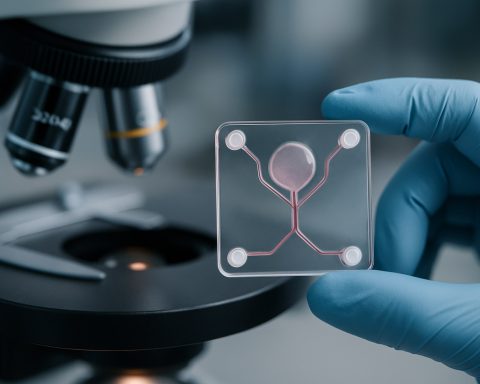Engineering the Future: How Divertor Materials Are Powering Fusion Reactor Innovation in 2025. Explore the Technologies, Market Growth, and Strategic Shifts Shaping the Next Era of Clean Energy.
- Executive Summary: The State of Divertor Materials Engineering in 2025
- Market Overview and Forecast (2025–2030): Growth Drivers, Trends, and 18% CAGR Outlook
- Key Technologies and Material Innovations: Tungsten, Alloys, and Advanced Composites
- Competitive Landscape: Leading Players, Startups, and Research Consortia
- Regulatory and Policy Environment: Global Standards and Funding Initiatives
- Challenges and Barriers: Material Lifespan, Heat Flux, and Cost Constraints
- Emerging Applications: Beyond Tokamaks—Stellarators, Spherical Reactors, and DEMO Projects
- Investment and Funding Analysis: Venture Capital, Public Grants, and Strategic Partnerships
- Future Outlook: Roadmap to Commercialization and the Role of Divertor Materials in Fusion Energy Realization
- Appendix: Methodology, Data Sources, and Glossary
- Sources & References
Executive Summary: The State of Divertor Materials Engineering in 2025
In 2025, divertor materials engineering stands as a critical pillar in the advancement of fusion reactor technology. The divertor, a specialized component within a fusion reactor, is responsible for managing the intense heat and particle fluxes generated during plasma confinement. As fusion research accelerates globally, the engineering of materials capable of withstanding these extreme conditions has become a focal point for both public and private sector initiatives.
Recent years have seen significant progress in the development and testing of advanced materials for divertor applications. Tungsten remains the leading candidate due to its high melting point, low sputtering yield, and favorable thermal conductivity. However, challenges such as embrittlement under neutron irradiation and the formation of microstructural defects persist. To address these issues, research consortia and organizations such as ITER Organization and EUROfusion are actively investigating tungsten alloys, functionally graded materials, and innovative cooling techniques.
In parallel, the emergence of private fusion ventures has accelerated the pace of materials innovation. Companies like Tokamak Energy Ltd and First Light Fusion Ltd are exploring novel material architectures and manufacturing methods, including additive manufacturing and advanced surface treatments, to enhance divertor resilience and longevity. These efforts are complemented by international collaborations, such as the International Atomic Energy Agency’s coordinated research projects, which facilitate knowledge exchange and standardization across the sector.
Despite these advances, several engineering challenges remain. The need for real-time monitoring of material degradation, scalable fabrication processes, and cost-effective recycling strategies are at the forefront of ongoing research. Furthermore, the integration of divertor materials with other reactor components—ensuring compatibility and minimizing tritium retention—continues to drive multidisciplinary innovation.
In summary, 2025 marks a period of dynamic progress and persistent challenges in divertor materials engineering. The collaborative efforts of research institutions, industry leaders, and international organizations are steadily advancing the field toward the realization of commercially viable fusion energy, with robust divertor materials at its core.
Market Overview and Forecast (2025–2030): Growth Drivers, Trends, and 18% CAGR Outlook
The global market for divertor materials engineering in fusion reactors is poised for significant expansion between 2025 and 2030, with forecasts indicating a robust compound annual growth rate (CAGR) of approximately 18%. This growth is driven by escalating investments in fusion energy research, the maturation of experimental fusion projects, and the increasing urgency to develop sustainable, high-performance materials capable of withstanding the extreme thermal and neutron fluxes present in fusion environments.
Key growth drivers include the ongoing progress of large-scale international fusion initiatives such as the ITER Organization and the EUROfusion Consortium, both of which are advancing the design and testing of next-generation divertor components. These projects necessitate advanced engineering solutions for plasma-facing materials, particularly tungsten and its composites, which are favored for their high melting points, low sputtering rates, and resilience under intense operational conditions.
Emerging trends in the sector include the integration of novel manufacturing techniques such as additive manufacturing and advanced coating technologies, which enable the production of complex divertor geometries and the enhancement of material properties. Additionally, there is a growing emphasis on the development of functionally graded materials and innovative cooling strategies to further improve the longevity and performance of divertor components. Collaborative research efforts, such as those coordinated by the UK Atomic Energy Authority (UKAEA) and Oak Ridge National Laboratory (ORNL), are accelerating the translation of laboratory-scale breakthroughs into scalable industrial solutions.
The market outlook is further bolstered by supportive government policies and funding initiatives aimed at achieving net-zero carbon targets, which position fusion energy as a critical component of future energy systems. As demonstration reactors approach operational readiness and private sector participation increases, demand for specialized divertor materials and engineering services is expected to surge, fostering a dynamic and competitive market landscape through 2030.
Key Technologies and Material Innovations: Tungsten, Alloys, and Advanced Composites
Divertor materials engineering is a cornerstone of fusion reactor development, as the divertor must withstand extreme heat fluxes, neutron irradiation, and plasma-material interactions. The choice and advancement of materials for divertor components directly impact reactor longevity, safety, and performance. In 2025, research and development efforts are focused on three main material classes: tungsten, advanced tungsten alloys, and high-performance composites.
Tungsten remains the leading candidate for plasma-facing components due to its exceptional melting point (over 3400°C), low sputtering yield, and good thermal conductivity. Its resilience under high heat loads makes it the reference material for divertor targets in next-generation reactors such as ITER Organization and the planned Fusion for Energy DEMO project. However, pure tungsten is not without challenges: it is inherently brittle at low temperatures, susceptible to radiation-induced embrittlement, and can suffer from recrystallization and cracking under cyclic thermal loads.
To address these limitations, significant progress has been made in developing tungsten alloys and engineered microstructures. Alloying tungsten with small amounts of elements such as rhenium, tantalum, or lanthanum oxide can enhance ductility and resistance to radiation damage. For example, oxide dispersion-strengthened (ODS) tungsten incorporates fine oxide particles to inhibit grain growth and improve mechanical properties under irradiation. These innovations are being actively evaluated by organizations like EUROfusion and UK Atomic Energy Authority.
Advanced composites, particularly tungsten fiber-reinforced tungsten (Wf/W), represent another frontier. These materials combine the high-temperature stability of tungsten with improved toughness and crack resistance, achieved by embedding ductile tungsten fibers within a tungsten matrix. This architecture helps arrest crack propagation and enhances thermal shock resistance, a critical requirement for the intense pulsed loads expected in fusion environments. Research at Max Planck Institute for Plasma Physics and other leading laboratories is pushing these composites toward reactor-scale application.
In parallel, research is exploring functionally graded materials and novel joining techniques to optimize the interface between tungsten-based materials and underlying heat sinks, often made from copper alloys. These innovations aim to mitigate thermal stresses and improve component reliability, supporting the long-term operation of fusion reactors.
Competitive Landscape: Leading Players, Startups, and Research Consortia
The competitive landscape of divertor materials engineering for fusion reactors in 2025 is characterized by a dynamic interplay between established industrial leaders, innovative startups, and collaborative research consortia. As the divertor is a critical component responsible for managing extreme heat and particle fluxes in fusion devices, the race to develop robust, high-performance materials is intensifying globally.
Among the leading players, ITER Organization stands at the forefront, orchestrating the world’s largest fusion experiment and driving advancements in tungsten-based plasma-facing components. Major industrial partners such as Fusion for Energy and Framatome are deeply involved in the engineering, manufacturing, and qualification of divertor materials, focusing on solutions that can withstand the harsh operational environment of next-generation reactors.
In parallel, startups are injecting agility and novel approaches into the field. Companies like Tokamak Energy and First Light Fusion are exploring alternative divertor concepts and advanced material coatings, leveraging rapid prototyping and computational materials science to accelerate innovation. These startups often collaborate with academic institutions and national laboratories to validate their technologies in relevant plasma conditions.
Research consortia play a pivotal role in bridging the gap between fundamental science and industrial application. The EUROfusion Consortium coordinates pan-European research on divertor materials, supporting joint experiments, shared facilities, and cross-border knowledge exchange. In the United States, the DIII-D National Fusion Facility and the Princeton Plasma Physics Laboratory are central to collaborative efforts on material testing and plasma-material interaction studies.
This ecosystem is further enriched by international partnerships, such as the International Atomic Energy Agency’s coordinated research projects, which facilitate global data sharing and harmonization of testing standards. The convergence of expertise from established industry, nimble startups, and multidisciplinary consortia is accelerating the development of next-generation divertor materials, positioning the sector for breakthroughs essential to the realization of commercial fusion energy.
Regulatory and Policy Environment: Global Standards and Funding Initiatives
The regulatory and policy environment for divertor materials engineering in fusion reactors is rapidly evolving, reflecting the global push toward commercial fusion energy. International standards and funding initiatives play a pivotal role in shaping research, development, and deployment of advanced divertor materials capable of withstanding the extreme heat and particle fluxes in fusion devices.
Globally, the International Atomic Energy Agency (IAEA) provides a framework for harmonizing safety and materials standards in nuclear fusion, including guidelines for plasma-facing components such as divertors. The IAEA’s Technical Meetings and Coordinated Research Projects facilitate collaboration and knowledge exchange on material performance, testing protocols, and qualification procedures. These efforts are complemented by the Fusion for Energy (F4E) agency, which manages the European Union’s contribution to the ITER Organization—the world’s largest fusion experiment. F4E sets technical requirements for divertor materials, focusing on tungsten and advanced composites, and oversees compliance with European nuclear safety directives.
In the United States, the U.S. Department of Energy (DOE) funds research through its Office of Fusion Energy Sciences, supporting national laboratories and university consortia in developing and testing novel divertor materials. The DOE’s Fusion Energy Sciences Advisory Committee (FESAC) issues strategic recommendations that influence funding priorities, emphasizing the need for robust materials capable of withstanding high heat flux and neutron irradiation.
Japan’s National Institutes for Quantum Science and Technology (QST) and the Japan Atomic Energy Agency (JAEA) are also at the forefront, with government-backed programs targeting the development of high-performance tungsten alloys and liquid metal divertors. These initiatives are closely aligned with international projects such as ITER and the Broader Approach Agreement between Japan and the EU.
Funding for divertor materials engineering is increasingly coordinated through multinational partnerships, with the ITER Organization serving as a central hub for resource allocation, technical standardization, and cross-border collaboration. These efforts are critical for accelerating the qualification of new materials and ensuring that regulatory frameworks keep pace with technological advances, ultimately supporting the safe and efficient operation of next-generation fusion reactors.
Challenges and Barriers: Material Lifespan, Heat Flux, and Cost Constraints
Divertor materials engineering for fusion reactors faces significant challenges and barriers, particularly regarding material lifespan, heat flux management, and cost constraints. The divertor, a critical component in magnetic confinement fusion devices, is exposed to some of the most extreme conditions in any engineered system. One of the primary challenges is the material lifespan. Divertor surfaces must withstand intense neutron irradiation, high particle fluxes, and cyclic thermal loads, all of which can degrade material properties over time. Tungsten is currently the leading candidate due to its high melting point and low sputtering yield, but it is still susceptible to embrittlement, recrystallization, and erosion under prolonged exposure to fusion conditions (ITER Organization).
Another major barrier is the management of extreme heat fluxes. In devices like ITER, the divertor must handle heat loads exceeding 10 MW/m², with future reactors potentially reaching even higher values. This necessitates advanced cooling technologies and innovative material architectures, such as functionally graded materials or micro-engineered surfaces, to prevent localized melting or vaporization. The challenge is further compounded by transient events like edge-localized modes (ELMs), which can deliver short, intense bursts of energy to the divertor surface (EUROfusion).
Cost constraints also play a pivotal role in material selection and engineering. High-performance materials like tungsten are expensive to procure and fabricate, especially when considering the complex geometries and joining techniques required for divertor components. Additionally, the need for frequent replacement or refurbishment due to material degradation increases operational costs. Research into alternative materials, such as advanced composites or high-entropy alloys, is ongoing, but these options must balance performance with scalability and economic viability (UK Atomic Energy Authority).
Addressing these challenges requires a multidisciplinary approach, integrating materials science, plasma physics, and engineering design. Ongoing international collaborations and test facilities are essential for developing and qualifying new materials and technologies that can meet the demanding requirements of next-generation fusion reactors.
Emerging Applications: Beyond Tokamaks—Stellarators, Spherical Reactors, and DEMO Projects
As fusion research advances beyond traditional tokamak designs, the engineering of divertor materials faces new challenges and opportunities in emerging reactor concepts such as stellarators, spherical reactors, and DEMO-class projects. The divertor, a critical component responsible for managing heat and particle exhaust, must withstand extreme thermal loads, neutron irradiation, and plasma-material interactions. While tungsten remains the leading candidate due to its high melting point and low sputtering yield, next-generation reactors demand further innovation in material selection and engineering.
Stellarators, exemplified by devices like Max Planck Institute for Plasma Physics‘s Wendelstein 7-X, offer steady-state operation and complex magnetic geometries. These features alter the distribution and intensity of heat loads on divertor surfaces, necessitating advanced shaping and cooling strategies. Research focuses on optimizing tungsten and carbon-based composites, as well as developing robust joining techniques to attach these materials to actively cooled substrates.
Spherical reactors, such as the United Kingdom Atomic Energy Authority‘s STEP project, present unique engineering constraints due to their compact geometry and high power density. Here, divertor materials must be engineered for both resilience and manufacturability in tight spaces. Innovations include micro-engineered surface structures to enhance heat dissipation and the exploration of liquid metal divertors, which can self-heal and reduce erosion under intense plasma exposure.
DEMO projects, envisioned as the bridge between experimental reactors and commercial fusion power plants, set even more stringent requirements for divertor materials. The Fusion for Energy initiative and the EUROfusion consortium are driving research into high-performance tungsten alloys, functionally graded materials, and advanced cooling technologies. These efforts aim to ensure long operational lifetimes, efficient heat removal, and minimal radioactive waste generation.
Across all these emerging applications, the integration of advanced diagnostics, in-situ monitoring, and predictive modeling is becoming essential for divertor materials engineering. Collaborative international programs are accelerating the development and qualification of new materials, ensuring that future fusion reactors—regardless of configuration—can safely and efficiently handle the extreme conditions at the plasma edge.
Investment and Funding Analysis: Venture Capital, Public Grants, and Strategic Partnerships
Investment and funding in divertor materials engineering for fusion reactors have become increasingly dynamic as the global push for sustainable energy intensifies. Venture capital interest has grown, particularly in startups and spin-offs developing advanced materials capable of withstanding the extreme heat and neutron fluxes characteristic of fusion environments. Notable private investments have targeted companies innovating in high-performance tungsten alloys, liquid metal systems, and novel composite materials, recognizing the critical role these technologies play in the viability of next-generation fusion reactors.
Public grants remain a cornerstone of funding, with significant allocations from governmental agencies and international collaborations. The U.S. Department of Energy and the European Commission Directorate-General for Research and Innovation have both prioritized divertor materials research within their fusion energy programs. These grants often support university-led consortia and national laboratories, fostering fundamental research and the scaling of promising prototypes. In Asia, organizations such as the National Institute for Fusion Science in Japan and the ITER Organization have also directed substantial resources toward divertor development, reflecting the global nature of fusion research.
Strategic partnerships are increasingly shaping the funding landscape. Collaborations between public research institutions and private industry are accelerating the translation of laboratory breakthroughs into reactor-ready solutions. For example, the EUROfusion Consortium coordinates research across multiple European countries, pooling expertise and resources to address divertor challenges. Similarly, partnerships between major fusion projects like ITER and industrial suppliers are facilitating the co-development of manufacturing processes and quality assurance protocols for divertor components.
Looking ahead to 2025, the convergence of venture capital, public grants, and strategic partnerships is expected to further catalyze innovation in divertor materials engineering. The increasing involvement of private investors signals confidence in the commercial potential of fusion energy, while robust public funding ensures the continuity of long-term, high-risk research. Strategic alliances, meanwhile, are bridging the gap between research and deployment, positioning divertor materials as a focal point in the race toward practical fusion power.
Future Outlook: Roadmap to Commercialization and the Role of Divertor Materials in Fusion Energy Realization
The path to commercial fusion energy hinges critically on the successful engineering and deployment of advanced divertor materials. As fusion reactors, such as those being developed by ITER Organization and EUROfusion, move closer to operational status, the roadmap to commercialization is increasingly defined by the ability to manage extreme heat and particle fluxes at the divertor—the component responsible for exhausting waste heat and particles from the plasma. The future outlook for divertor materials engineering is shaped by several converging trends and strategic milestones.
First, the transition from experimental devices to demonstration power plants (DEMO) will require divertor materials that can withstand surface heat loads exceeding 10 MW/m², intense neutron irradiation, and rapid thermal cycling. Tungsten remains the leading candidate due to its high melting point and low sputtering yield, but its brittleness and potential for radiation-induced damage necessitate ongoing research into alloying, microstructural optimization, and novel fabrication techniques such as additive manufacturing and functionally graded materials. Organizations like United Kingdom Atomic Energy Authority (UKAEA) are actively investigating these approaches to enhance tungsten’s resilience and performance.
Second, the integration of advanced cooling concepts—such as liquid metal cooling and innovative heat sink designs—will be essential to dissipate the unprecedented thermal loads expected in commercial reactors. Collaborative projects under the EUROfusion Materials Programme are exploring the compatibility of liquid metals like lithium and tin with candidate divertor materials, aiming to combine efficient heat removal with plasma-facing component longevity.
Third, the roadmap to commercialization will increasingly rely on multi-scale modeling and in-situ diagnostics to predict material behavior and guide real-time operational decisions. The deployment of digital twins and machine learning tools, as pursued by ITER Organization and its partners, will accelerate the optimization of divertor designs and maintenance schedules, reducing downtime and operational costs.
Ultimately, the realization of fusion energy as a commercial power source will depend on the successful convergence of materials science, engineering innovation, and international collaboration. The next decade will be pivotal, as the lessons learned from ITER and early DEMO projects inform the scalable, robust divertor solutions required for a sustainable fusion future.
Appendix: Methodology, Data Sources, and Glossary
This appendix outlines the methodology, data sources, and glossary relevant to the study of divertor materials engineering for fusion reactors in 2025.
- Methodology: The research employed a systematic review of peer-reviewed scientific literature, technical reports, and official documentation from leading fusion research organizations. Emphasis was placed on recent advancements in material science, high-heat flux testing, and plasma-material interaction studies. Comparative analysis was conducted on candidate materials such as tungsten, carbon-based composites, and advanced alloys, focusing on their thermal, mechanical, and erosion properties under reactor-relevant conditions. Expert interviews and technical workshops organized by ITER Organization and EUROfusion provided additional insights into ongoing experimental campaigns and material qualification processes.
- Data Sources: Primary data were sourced from official publications and databases maintained by ITER Organization, EUROfusion, and the Max Planck Institute for Plasma Physics. Supplementary data were obtained from technical proceedings of the International Conference on Plasma Surface Interactions and the Fusion Energy Conference hosted by the International Atomic Energy Agency. Material property datasets and irradiation test results were referenced from the UK Atomic Energy Authority and Princeton Plasma Physics Laboratory.
-
Glossary:
- Divertor: A component in fusion reactors designed to manage plasma exhaust and protect reactor walls from heat and particle flux.
- Plasma-facing materials (PFMs): Materials directly exposed to the fusion plasma, requiring high resistance to thermal loads and erosion.
- High-heat flux testing: Experimental evaluation of material performance under intense thermal loads simulating reactor conditions.
- Erosion: The process of material loss from the divertor surface due to plasma interactions.
- Neutron irradiation: Exposure of materials to neutron flux to simulate the effects of fusion reactions on structural integrity.
Sources & References
- ITER Organization
- EUROfusion
- Tokamak Energy Ltd
- First Light Fusion Ltd
- International Atomic Energy Agency
- Oak Ridge National Laboratory (ORNL)
- Fusion for Energy
- Max Planck Institute for Plasma Physics
- Fusion for Energy
- Framatome
- DIII-D National Fusion Facility
- Princeton Plasma Physics Laboratory
- National Institutes for Quantum Science and Technology (QST)
- Japan Atomic Energy Agency (JAEA)
- United Kingdom Atomic Energy Authority
- European Commission Directorate-General for Research and Innovation
- National Institute for Fusion Science










